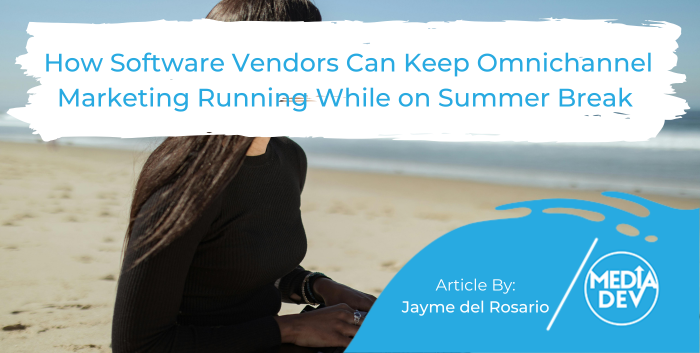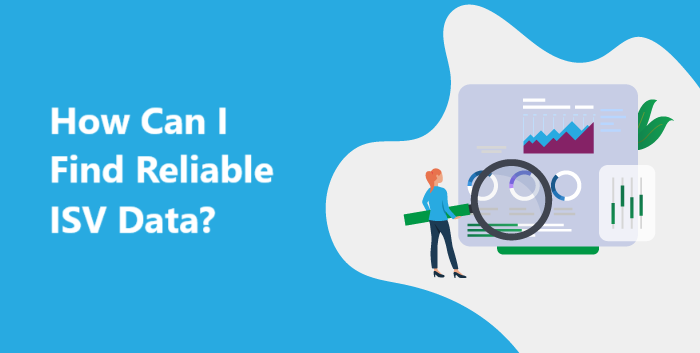When I first joined MediaDev over 11 years ago, I didn’t know anything about IT. I didn’t know what an ISV (Independent Software Vendor) was, had never heard of a VAR (Value-Added Reseller), and was somewhat overwhelmed by the quantity of unfamiliar acronyms that were being thrown at me daily, including those about OEM (Original Equipment Manufacturer) Channel Partners, SaaS (Software-as-a-Service) business models or CRM (Customer Relationship Management) solutions. Having joined the company with experience in marketing, communications and public relations, I thought surely the “rules” that applied to other industry sectors would naturally transfer to IT. And while in some cases it does, in many ways marketing software solutions can be an entirely different ball game than it is for other types of products or services.
In time (and as I became more familiar with the lingo of the industry), I got to understand how various software systems work, and what benefits they provide user groups. I came to know target audiences better and was able to put myself in the shoes of potential customers. Since understanding buyer personas is key to being a successful marketer, I came to realize that this is also why marketing can never be the same for all products. Marketing for non-profits, retail chains, automobiles or organic fish, is very different from software, which is why specialized tactics need to apply to each. And it really can only work if your marketer knows what they’re talking about.
In fact, my main criticism about much of the content produced by ISVs is that it contains too much of what I call “marketing blah blah”, (those nicely crafted phrases that don’t end up meaning anything) instead of just getting straight to the point. It’s really easy to lose the punch of a value proposition when vague language is used, but it’s not always easy as a marketer to transform complex technical concepts into layman’s terms either. Content is king, but making your content valuable in an era of information overload is vital for ISVs because they inherently live in a “survival of the fittest” environment. Competition is rude (and ever-evolving), which is why inbound marketing is of utmost importance for ISVs. Of course, capturing the attention of potential buyers before they’re snapped up by rivals is easier said than done. That’s why we’ve created a list of our top do’s and don’ts of inbound marketing for ISVs:
The Do’s
Do create a strategy
Many start-ups and young software companies overlook this fundamental step before deploying online marketing tactics. It’s one of the biggest mistakes that can be made since not having a roadmap will likely lead to deploying tactics at random with no sense of the bigger (and longer-term) picture. It’s really easy to dump a lot of money into online advertising — which by itself can have little to no impact on actual sales because it’s not done as part of a larger inbound strategy. By having a holistic approach to marketing, your ISV can determine the best, most cost-effective methods to reaching your target audience without breaking the bank.
Do build trust for your brand
When short-term sales seem like the most important company goal, it can be hard to keep the longer-term vision in mind when running marketing campaigns. In the rush for sales, ISVs often forget that building trust is a process that takes time. You can’t force a prospect to trust you — it comes from repeatedly doing and saying things that reinforce your company’s values, and creating a context where prospects can get to know who you really are as a brand. Social media is a great platform that can make or break companies when it comes to trust. It’s important to avoid falling into the traps and remember that these public forums spread the word faster than any other media known to man.
It’s also important to remember that you’re a consumer too. How do you want to be treated by other companies you are engaging with? Would you want them to be pushy, invasive or rude? Would you want them to bombard you with email messages? Would you want to see them treat customers poorly on social media? If you’re like me, the answer is of course not. Your brand should reflect what you would like to see as a consumer. As the golden rule says, “Do unto others as you would have them do unto you.” If you follow this one simple rule, building trust will come a whole lot easier to you.
Do listen
Social selling is all the rage, but social listening is one of the biggest, most overlooked aspects of creating a two-way conversation with prospects. If you do all the talking, eventually people will just move on to another brand that they identify with more. It’s like being with someone at a party that won’t stop talking about themselves — you quickly get bored and can’t wait to bee-line your way to the nearest escape route as soon as you get the chance.
Social media marketing expert Dave Kerpen says in his book Likeable Social Media, “Communication is 50 percent listening and 50 percent talking. Yet for many years, companies large and small have done a disproportionate amount of talking, shouting even. Social media is the first communications channel that allows for such listening in large scale, and no matter what you sell or market, your customers are definitely talking.”
Do engage your audience with great content
As I mentioned earlier, content is a must. Creating engaging content comes from providing immediate value to your prospects because you understand the challenges they face, and you position your company/product as the solution. Great content can take many forms: videos, blogs, vlogs, infographics, e-books, case studies, white papers, or all of the above. I like it when companies have a variety of content because it gives your audience the choice; don’t forget that not everyone “consumes” content in the same way (or in the same place); making sure you have the right content in the right place at the right time is the trick to getting the equation just right. Which is why once you have content, it’s time to promote it.
Do optimize for keywords
As ISV content writer for DevPro Journal Bernadette Wilson says, “The time or cost to write one blog on a topic with a long shelf life can draw people to your website for years if it’s optimized for a keyword your prospects are searching. When part of a strategic campaign, a blog can tease a video, e-book, or demo on your site, direct website visitors to fill out a form to view or download, and result in marketing leads.”
Optimizing content for keywords is an essential part of any inbound marketing strategy. But again, it’s not something that will have an instantaneous result. Patience is a virtue, and optimization needs to be ongoing. Monitoring keywords and determining how you rank on search engines will help you track progression over time. And as Bernadette says, the shelf life of good content is long — you may continue to attract visitors to your website years down the road, making your return on investment for that one asset immeasurable in the short term.
The Dont’s
Don’t say you have no competitors
Whenever a software solution provider tells me, “Our product is unique, we don’t have any competitors,” I can’t help but roll my eyes. It’s not to be condescending, but clearly, thinking you don’t have any competitors just means that you don’t know your market. You may have unique selling points that make your solution great, but that doesn’t mean you’re alone. Knowing your competitors (even if they’re indirect ones) is a very important part of designing an effective inbound marketing strategy.
The ISV industry is cut-throat, and it’s constantly changing. New technology is being developed all the time, so even if you occupy a niche and have a unique position on the market now, it doesn’t mean that the situation will always stay that way. Monitoring the market by putting in place competitive intelligence mechanisms will help you stay on top and remain agile in the face of potential threats.
Don’t rule out a tactic just because you had one bad experience
I see this all the time too: A company that rules out online marketing insisting it doesn’t work just because they tried running one ad campaign that didn’t bring them any business. That’s like never eating apples ever again because you ate one bad one. Sound reasonable? In this case, it’s really important to analyze what you did to understand why it didn’t work, then learn from that experience to do better the next time. Conducting a marketing audit will help serve as a basis for understanding your current content ecosystem, conversion ratios, domain authority and SEO ranking; put this in the context of your inbound strategy development.
Don’t forget the importance of word of mouth
Making your customers brand ambassadors is a fantastic way to help spread the word. Word-of-mouth marketing is proven to be one of the most effective methods out there, and it’s just as true for the B2B world as it is for the B2C one. By encouraging your current customers to share their experiences online with their friends and colleagues, you can help increase visibility for your brand across online channels.
Don’t give up
It’s not always easy to keep up marketing efforts when you are not sure about the return it will bring. Sometimes it can feel like no one’s listening, or that your efforts are for naught. Even the best content writers sometimes experience writer’s block, but just because you hit an obstacle doesn’t mean you should abandon your efforts entirely. Marketing isn’t easy, but the only way to “make it” is to continue to sustain the effort overtime.








